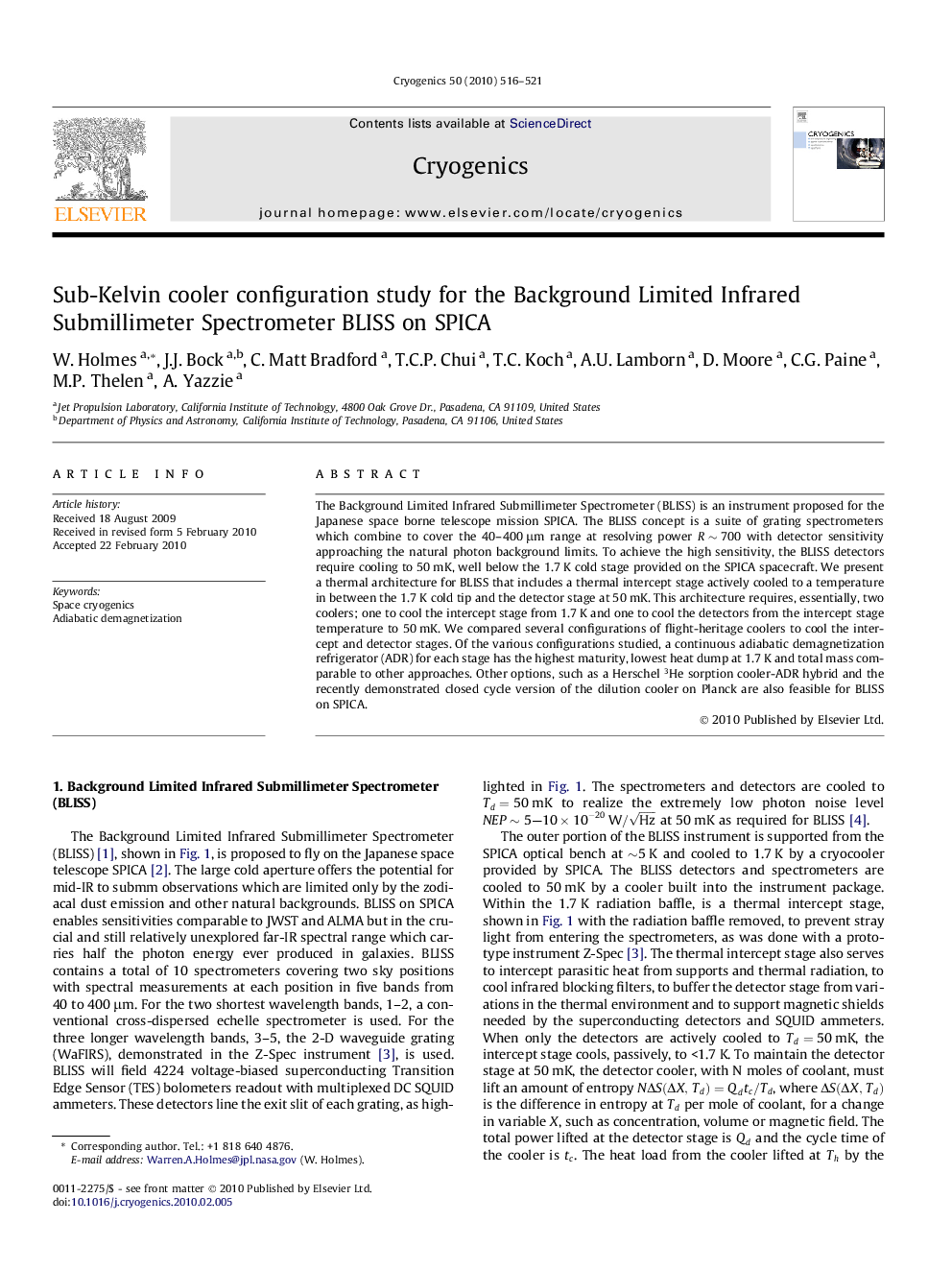| Article ID | Journal | Published Year | Pages | File Type |
|---|---|---|---|---|
| 1507959 | Cryogenics | 2010 | 6 Pages |
Abstract
The Background Limited Infrared Submillimeter Spectrometer (BLISS) is an instrument proposed for the Japanese space borne telescope mission SPICA. The BLISS concept is a suite of grating spectrometers which combine to cover the 40-400 μm range at resolving power Râ¼700 with detector sensitivity approaching the natural photon background limits. To achieve the high sensitivity, the BLISS detectors require cooling to 50 mK, well below the 1.7 K cold stage provided on the SPICA spacecraft. We present a thermal architecture for BLISS that includes a thermal intercept stage actively cooled to a temperature in between the 1.7 K cold tip and the detector stage at 50 mK. This architecture requires, essentially, two coolers; one to cool the intercept stage from 1.7 K and one to cool the detectors from the intercept stage temperature to 50 mK. We compared several configurations of flight-heritage coolers to cool the intercept and detector stages. Of the various configurations studied, a continuous adiabatic demagnetization refrigerator (ADR) for each stage has the highest maturity, lowest heat dump at 1.7 K and total mass comparable to other approaches. Other options, such as a Herschel 3He sorption cooler-ADR hybrid and the recently demonstrated closed cycle version of the dilution cooler on Planck are also feasible for BLISS on SPICA.
Related Topics
Physical Sciences and Engineering
Materials Science
Electronic, Optical and Magnetic Materials
Authors
W. Holmes, J.J. Bock, C. Matt Bradford, T.C.P. Chui, T.C. Koch, A.U. Lamborn, D. Moore, C.G. Paine, M.P. Thelen, A. Yazzie,
